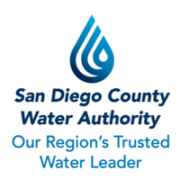Historic ‘Level 1’ Shortage Declared for Lake Mead, Though San Diego Still Has Reliable Supply
Federal officials on Monday issued the first “Level 1” shortage declaration for the massive reservoir of Lake Mead on the Colorado River, triggering major water cuts for Arizona, Nevada and Mexico.
The cuts for water users downstream from Hoover Dam will begin in October, the U.S. Bureau of Reclamation said in a statement.
“Today’s announcement of a Level 1 Shortage Condition at Lake Mead underscores the value of the collaborative agreements we have in place with the seven basin states, tribes, water users and Mexico in the management of water in the Colorado River Basin,” said Reclamation Deputy Commissioner Camille Touton.
But she warned that other reservoirs were short as well and “we have not eliminated the potential for continued decline of these critically important reservoirs” during what has become a historic drought.
Total Colorado River system storage is currently at 40% of capacity, down from 49% at this time last year.
Read the complete story from the Times of San Diego: https://bit.ly/3AOLUaE





